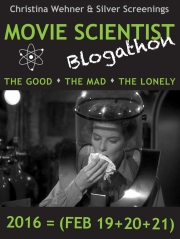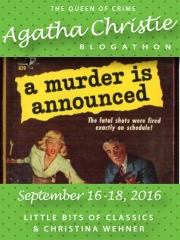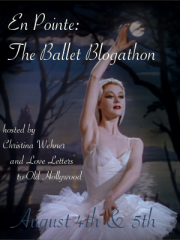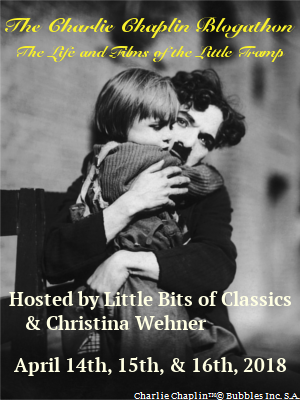 Even people who don’t usually watch old movies know of The Quiet Man, one of those classics of the classics and it was one of the classic films I grew up with. But as seems to happen with all the movies that I grew up watching, I didn’t watch it for years and years and since 2015 seems to be the year for revisiting old favorites, I recently watched it again. But since it had been so long, it almost felt like a new movie, which is always fun to see an old favorite with fresh eyes. It was a complete delight and I was reminded of why the movie has a special charm.
Even people who don’t usually watch old movies know of The Quiet Man, one of those classics of the classics and it was one of the classic films I grew up with. But as seems to happen with all the movies that I grew up watching, I didn’t watch it for years and years and since 2015 seems to be the year for revisiting old favorites, I recently watched it again. But since it had been so long, it almost felt like a new movie, which is always fun to see an old favorite with fresh eyes. It was a complete delight and I was reminded of why the movie has a special charm.
Here are six things I noticed for the first time – or perhaps I should say – actually thought about when I saw them.
1) No men go to Mass! When Sean Thornton (John Wayne) returns to Ireland and runs into Father Lonergan (Ward Bond), the priest asks him if he will see him at Mass. This puts Sean Thornton on the spot, but he does go. But Mass is by no means packed and the only other people in attendance are women and one old man. Michealeen Oge Flynn (Barry Fitzgerald) sits outside the church and smokes his pipe and the rest of the men are at the pub. Of course, one good thing comes of Sean Thornton’s attending Mass. He is able to see Mary Kate Danaher (Maureen O’Hara), who appears to be one of the devout women who presumably attend regularly, and “play patty fingers with the Holy Water” (in the words of Michaeleen Oge Flynn).
2) The British are entirely negligible, isolated and out of touch. There’re not exactly a lot of English people running around in The Quiet Man – this is purely an Irish tale, with some talk of “treason” and the IRA, mostly talked by men in the pub to their fellow inebriates. However, during the big fight scene at the end when all the patrons rush out to watch Sean Thornton and Squire Danaher (Victor McLaglen) duke it out, there is one man still sitting in the pub. He’s called General and he looks rather like your stereotypical English officer. I can’t think of anything more funny or ironic than in how this man (I’m assuming he is an Englishman) continues sitting, unaware, unmoved, uninterested and isolated from the entire Irish community.
3) When Mary Kate and Sean Thornton go out courting together and give the matchmaker, Michaelean Oge Flynn, the slip they run into a field and she takes off her stockings so that she can run through a stream. While Sean Thornton tosses his hat and gloves away into the field, I was amused to note that despite running through fields and streams, getting soaked and rained on and making out with Thornton, there she is at the end of the day, still hanging on tightly to those stockings. Of course, they’re probably her best, and probably her only, pair of silk stockings, so this makes sense.
4) Mary Kate Danaher was a spinster. That little nuance totally missed me as a child. A spinster is someone who is an established old maid, with no prospects or expectation of ever marrying. She’s called a spinster several times by Michaeleen Oge Flynn and no one seems to think of her as a marriageable women. It seems rather incredible, considering how absolutely gorgeous she is, but Mary Kate is taken for granted in Inisfree. Michaeleen Oge says it’s because of her temper and lack of fortune. Apparently, people can’t see beyond that and, truly, there appears to be no man worthy of her anyway (they’re all in the pub, drinking), until Sean Thornton arrives. He sees her and it is love at first sight and seems to be for her, as well.
But as a spinster, it meant that she was destined to live with her brother her whole life and cook and clean and serve him and his hired hands, with no home or possessions of her own.
5) And this brings me to my fifth observation. I finally understood Mary Kate’s perspective. As a child, I didn’t quite get the fuss about her dowry. I recognized that it was Ireland and they did things differently, but it still didn’t make sense to me. So what about the dowry; all you need is love, right?
But I think her being a spinster is important. After her brother denies them her dowry, she says she’s not truly married to Thornton and refuses to let him into the bedroom. She says she’ll wash and cook for him, just like she did for her brother all those years, but she’s still a servant just like she always was.
This is illuminating. It’s more than just the money and her furniture, as Mary Kate says several times, and even more than just the fact that she’s afraid that she married a coward. It’s partially a matter of pride and independence. She wants to come to the marriage with something of her own – her own furniture and her own money. She doesn’t want to play the beggar maid. As long as her brother is withholding money, he’s got something on them and she’s still not quite independent of him. She’s not quite her own woman and, in her view, Sean Thornton’s not quite his own man.
 He doesn’t get this, though.This is a classic example of people talking over each other’s head. He speaks and she speaks and they do not understand each other. This is partially his fault, though. She might have understood if he’d told her about his boxing past and how he’d killed a man in the ring and that after that money never mattered to him. But he can’t blame her for not understanding something she knows nothing about. He says to the Reverend Mr. Playfair, “maybe she doesn’t love me enough.” But love is not just blindly assuming that someone’s private reasons for something are good ones. Perhaps I’m being too modern in this critique. I don’t know if they ever do fully understand each other’s perspectives, though.
He doesn’t get this, though.This is a classic example of people talking over each other’s head. He speaks and she speaks and they do not understand each other. This is partially his fault, though. She might have understood if he’d told her about his boxing past and how he’d killed a man in the ring and that after that money never mattered to him. But he can’t blame her for not understanding something she knows nothing about. He says to the Reverend Mr. Playfair, “maybe she doesn’t love me enough.” But love is not just blindly assuming that someone’s private reasons for something are good ones. Perhaps I’m being too modern in this critique. I don’t know if they ever do fully understand each other’s perspectives, though.
6) I always wanted to know what Mary Kate was saying in Irish to Father Lonergan. She’s obviously talking about how she made her husband sleep in a sleeping bag instead of his own bed. I read on IMDB of someone who says they know Gaelic and that she’s asking Father Lonergan if it’s a sin. I suspect Father Longergan said it was a sin. Anyway, later she and Thornton are sitting by the fire looking forlorn. But the next morning, Sean Thornton is walking out of his bedroom looking extremely happy with the world at large, only to discover that she’s left him. This is what finally gets him angry enough to fight. It’s not just because she left him; he thought everything was finally all right and for her it wasn’t. In a way, by finally living as man and wife, she fulfills her part of the marriage contract and goads him into fulfilling his part (as she sees it) of getting her dowry. And by the end of the movie they are truly married.









